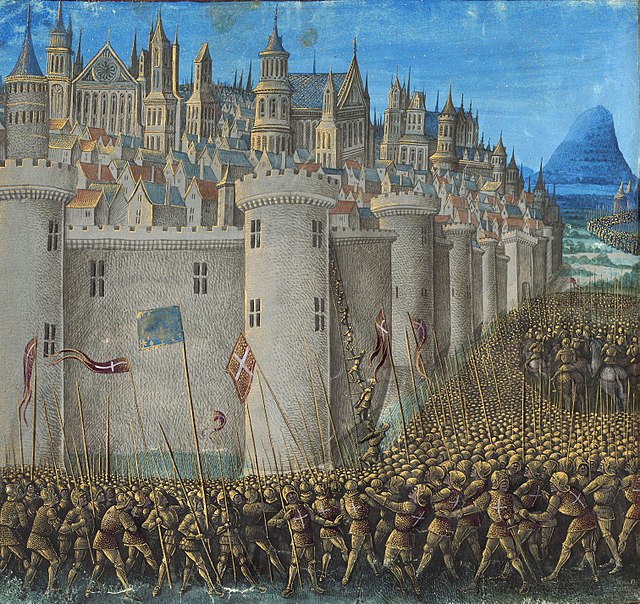The Republic of Genoa was a medieval and early modern maritime republic from the years 1099 to 1797 in Liguria on the northwestern Italian coast. During the Late Middle Ages, it was a major commercial power in both the Mediterranean Sea and the Black Sea. Between the 16th and 17th centuries, it was one of the major financial centers in Europe.
The Siege of Antioch, 1098.
Galata Tower (1348) in Galata, Istanbul.
The Genoese fortress in Sudak, Crimea.
A view of Genoa and its fleet by Christoforo de Grassi (1597 copy, after a drawing of 1481); Galata Museo del Mare, Genoa.
The maritime republics, also called merchant republics, were Italian thalassocratic port cities which, starting from the Middle Ages, enjoyed political autonomy and economic prosperity brought about by their maritime activities. The term, coined during the 19th century, generally refers to four Italian cities, whose coats of arms have been shown since 1947 on the flags of the Italian Navy and the Italian Merchant Navy: Amalfi, Genoa, Pisa, and Venice. In addition to the four best known cities, Ancona, Gaeta, Noli, and, in Dalmatia, Ragusa, are also considered maritime republics; in certain historical periods, they had no secondary importance compared to some of the better known cities.
Nautical chart of the Eastern Mediterranean, by Grazioso Benincasa (1466)
Meloria, the theatre of the 1284 battle which saw Genoa's victory over Pisa
The chains of the port of Pisa, removed by the Genoese after the battle of Meloria and returned as a sign of Italian brotherhood in two different moments of the Risorgimento: in 1848 and in 1860
The maritime republics built the ships they needed in their own arsenals. Pictured is the Venetian Arsenal.








